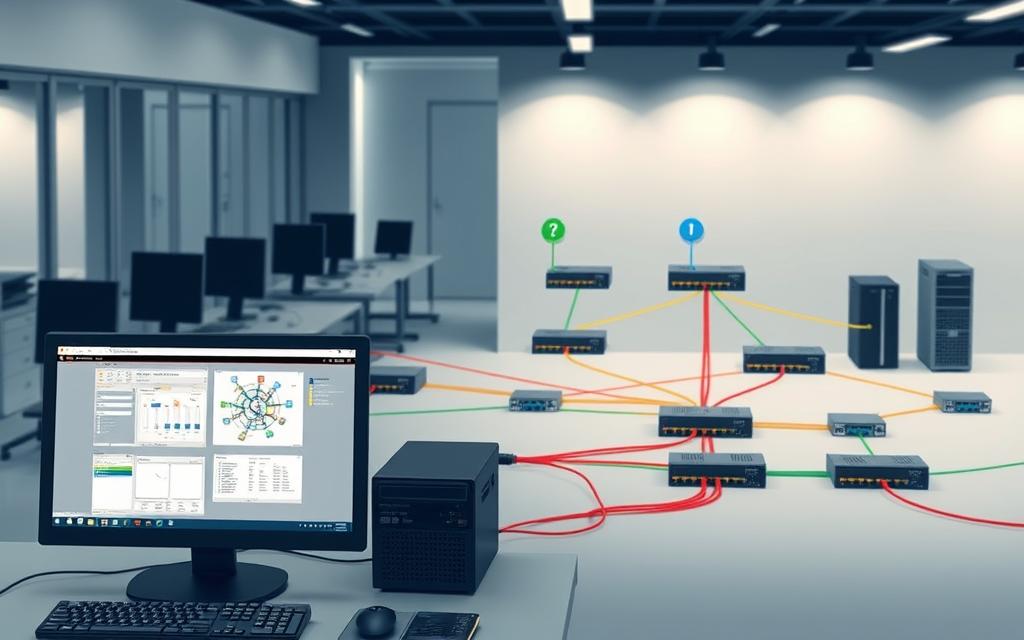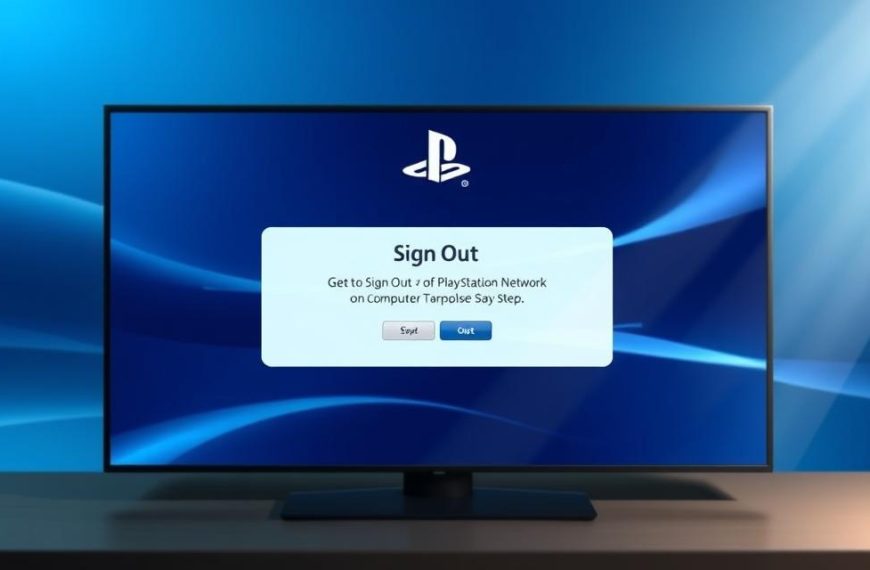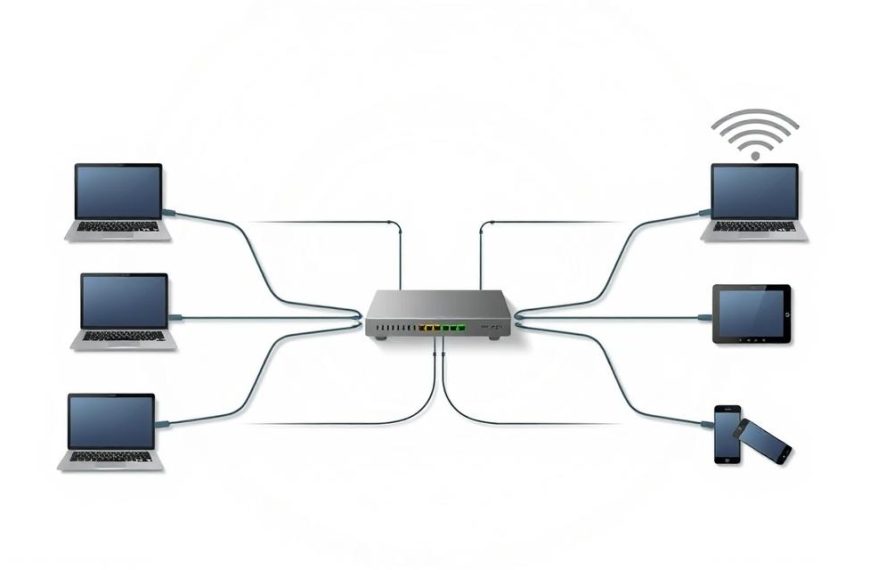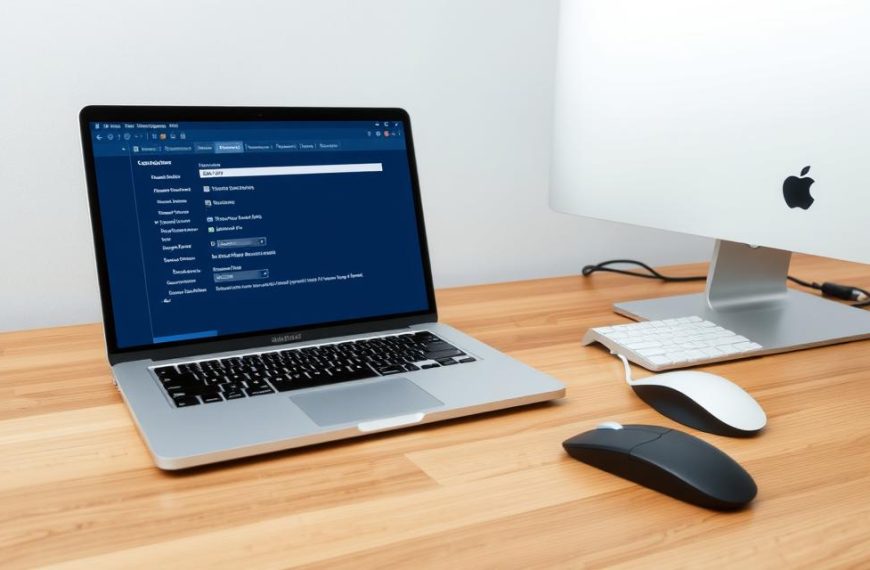Having trouble with your local network can be really annoying. When devices can’t talk to each other, it messes up work in homes and offices.
A common sign of local network issues is a failed ICMP echo request. This tool checks if devices can connect.
This guide offers real fixes for ping failure. We’ll show you how to fix network troubleshooting steps to get your devices talking again.
Our expert advice helps you find and fix the problem fast.
Understanding Why You Can Not Ping Computer on Same Network
If you can’t ping another device on the same network, it means there’s a problem. The ping command is a key tool for finding these issues. It helps you see if there’s a connection problem.
https://www.youtube.com/watch?v=Ufo2v92_aqU
Common Causes of Ping Failures
Many things can stop you from pinging devices. Firewalls might block ICMP traffic, seeing it as a threat. Also, if IP settings are wrong, devices can’t find each other.
Physical issues like bad cables or turned-off devices also stop pings. These problems are often missed but are very important.
“Ping is the digital handshake of network communication – when it fails, the conversation cannot begin.”
Here are some common reasons for ping failures:
| Cause Category | Specific Issue | Typical Symptoms |
|---|---|---|
| Security Software | Firewall blocking ICMP | Request timed out errors |
| Network Configuration | Subnet mismatches | Destination host unreachable |
| Hardware Issues | Faulty network adapter | General failure messages |
| IP Management | Address conflicts | Inconsistent ping results |
Importance of Ping in Network Diagnostics
The ping command checks if devices can talk to each other. It’s the first step in checking if a network is working right.
This tool checks if devices can reach each other and how fast. Fast responses mean everything is okay. Slow or no responses mean there’s a problem.
Network experts use ping a lot. It helps them:
- Check if devices can talk to each other
- See how fast data travels
- Find out if data is lost
- Find where the network is broken
Knowing how ping works is key to fixing network problems. It helps find the cause of issues and guides how to fix them.
Perform Initial Basic Checks
Before you start with complex network checks, fix the simple issues first. These basic steps often solve connectivity problems without needing advanced tech skills.
Verify Physical Connections and Device Power
Begin with the obvious but often missed steps. Make sure all devices are turned on and working. Check that computers, routers, and switches have their activity lights on.
Look at all Ethernet cables for tight connections at both ends. Check for any damage that could block signals. Try swapping cables with known good ones to find the problem.
Also, check that network switches and routers are working. They should have normal lights for power and activity. A simple reboot can fix some connectivity issues.
Check IP Address Configurations Using ipconfig or ifconfig
After checking physical connections, verify your network settings. IP address mismatches are a common cause of ping failures.
For Windows users, open Command Prompt and use the ipconfig command. It shows your IP settings, including the address, subnet mask, and default gateway. Make sure all devices have the same network part of their IP addresses.
Linux and macOS users should use the ifconfig command in their terminal. It gives similar info about network interfaces and settings. Focus on the ‘inet’ address and netmask values.
Key things to check include:
- All devices have addresses in the same IP range
- Subnet masks are the same on all devices
- No duplicate IP addresses on the network
- Default gateway settings are the same where needed
Wrong network settings can make devices seem on different networks, even if they’re close. This mismatch stops ping responses, even if everything else works fine.
Adjust Firewall Settings to Allow Ping Requests
When basic network checks show you’re connected but ping requests fail, firewalls are often the issue. Modern security systems block ICMP traffic by default. This is because they see ping requests as threats, not tools for checking connections. Adjusting your Windows Firewall settings or third-party firewalls can help fix these problems.
Configure Windows Firewall for ICMP Traffic
Windows Firewall blocks incoming ping requests to keep you safe. To ICMP enable these requests, you need to change some inbound rules. This requires admin rights and careful steps.
Here’s how to tweak your Windows Firewall settings:
- Open Windows Defender Firewall with Advanced Security
- Select Inbound Rules from the left navigation pane
- Find and enable “File and Printer Sharing (Echo Request – ICMPv4-In)”
- Right-click the rule and select Enable Rule
- Apply changes and test your ping functionality
Some users face ongoing issues even after setting up the right inbound rule. This usually means there are more security layers or conflicting settings that need to be sorted out.
Modify Third-Party Firewalls like Norton or McAfee
Third-party security tools often block more than Windows Firewall. Programs like Norton firewall and McAfee firewall need specific tweaks to let ICMP traffic through.
For Norton security products:
- Open the main application window
- Navigate to Settings → Firewall
- Select Network Trust → Configure next to your network
- Change the setting to Trusted instead of Public or Restricted
Adjusting McAfee firewall settings is similar:
- Access the McAfee security centre
- Select Firewall from the navigation menu
- Choose Network Connections → Configure
- Make sure ICMP protocols are allowed for local network traffic
Always check your connection after changing firewall settings. It’s important to find the right balance between network access and security. Only disable firewalls for testing in safe environments.
Resolve Network Configuration and Subnet Issues
Subnet errors and router/switch settings can block ping requests. These issues often hide until you try to communicate between devices. It’s key to align your network for successful pings.
Ensure Devices Are on the Same Subnet
Devices need to be on the same network segment to talk directly. Different subnets are like separate areas in your network. Check each device’s IP address and subnet mask to confirm.
To see if devices are on the same subnet, compare their network parts. The subnet mask shows which part of the IP address is the network. If masks don’t match, you’ll face IP subnet issues that stop communication.
Here’s how to check if devices are on the same subnet:
- Run ipconfig (Windows) or ifconfig (Linux/Mac) on each device
- Compare the network addresses from IP and subnet mask
- Make sure all devices have the same network address for pinging
Incorrect subnet configuration is a common mistake in networks. It happens when devices get manual IP addresses without coordination. This issue is discussed in this network community resource. Subnets on the same switch usually talk to each other unless blocked.
Check Router and Switch Settings for Blockages
Network hardware can block devices on purpose. These settings can surprise you about connectivity. Router panels have many options that affect internal traffic.
Look at your router settings for features like:
- Client isolation or AP isolation
- LAN port segmentation
- Firewall rules blocking internal ICMP
- VLAN configurations separating devices
Modern network switch settings can also block communication. Managed switches let you control port-to-port communication. Even unmanaged switches might have default settings that limit traffic.
Go to your router’s admin page to check these settings. Look for options related to local network or device isolation. Turning off unnecessary restrictions often fixes ping problems between devices.
Some router settings are for security. Think if disabling them is safe for your network. Always keep a record of any changes to your network hardware.
Apply Advanced Troubleshooting Techniques
When basic troubleshooting doesn’t work, you need more advanced methods. These techniques give you a deeper look into how your network works. They can find problems that simple tests might miss.
Use Command Line Tools for In-Depth Diagnostics
Command-line tools are great for detailed network analysis. The arp command is very useful for checking if devices are recognised in your local network.
Analyse ARP Table Outputs with arp -a
Using arp -a shows the current ARP table. It lists IP-to-MAC address mappings your computer has found. This helps see if your system knows other devices on the network.
A healthy ARP table should have full entries for devices you’re trying to ping. Missing or incomplete entries mean there’s a problem at the data link layer. Seeing the same IP address in the table means there’s a big conflict that needs fixing right away.
Identify and Resolve IP Conflicts or DHCP Problems
IP address conflicts are common but really annoying. They happen when more than one device uses the same IP address. This stops all devices from talking to each other.
For Windows, use ipconfig /release and then ipconfig /renew to get new DHCP settings. This clears old settings and asks the DHCP server for new ones. It often fixes temporary problems.
Dealing with DHCP issues that keep coming back? Look at your router’s DHCP lease table for duplicate addresses. Many routers have web interfaces that show who’s using which IP address. This helps spot conflicts.
If your network uses static IP addresses, check each device’s settings. Make sure they all have different addresses in your subnet. Keeping track of static IP addresses helps avoid future problems and makes managing your network easier.
Utilise Alternative Tools for Network Testing
When ping commands don’t work, other tools can help. They check if your network is working, even if ping can’t get through.
Employ Network Scanners such as Advanced IP Scanner
Network scanners give you a detailed look at your network. They find devices in ways ping can’t.
Advanced IP Scanner is a top choice for Windows users. It scans your network and shows all devices, their IP and MAC addresses, and more. It can even find device names and shared folders.
These network scanners send ARP requests to find devices. They’re great for finding devices that ping can’t reach because of firewalls or setup problems.
Network scanning tools do more than just find devices. You can wake computers, access shared folders, or even connect via RDP. They’re essential for managing your network well.
Test Connectivity with Other Protocols like HTTP or SMB
Testing with other protocols is useful when ping doesn’t work. It checks if higher-level network services are up and running.
HTTP testing means trying to reach web services on a device. Open a web browser and go to the device’s IP address. Many devices, like printers and routers, have web interfaces that show they’re connected.
For SMB protocol testing, try to access shared folders. On Windows, type the device’s UNC path into File Explorer. If you can connect, it means your network is working, even if ping fails.
These alternative connectivity tests are often better than ping in work settings. Many companies block ICMP for security but let through HTTP and SMB.
You can use command-line tools to automate these tests. For HTTP, try curl or wget. For SMB, use net view to see shares on remote computers. This makes it easy to see if your network is working or not.
Conclusion
Fixing a ping failure on the same network needs a clear plan. First, check physical connections and adjust firewall settings for ICMP. Then, make sure IP configurations are correct.
When basic checks don’t work, look at subnet alignment and router settings. Tools like command-line diagnostics or network scanners help uncover deeper issues.
Steady progress comes from thorough testing. Try restarting devices or solving DHCP conflicts to get things working again. Each step helps improve network reliability.
Use these methods to solve similar problems. A well-organised approach keeps your network stable and reduces future problems.

















